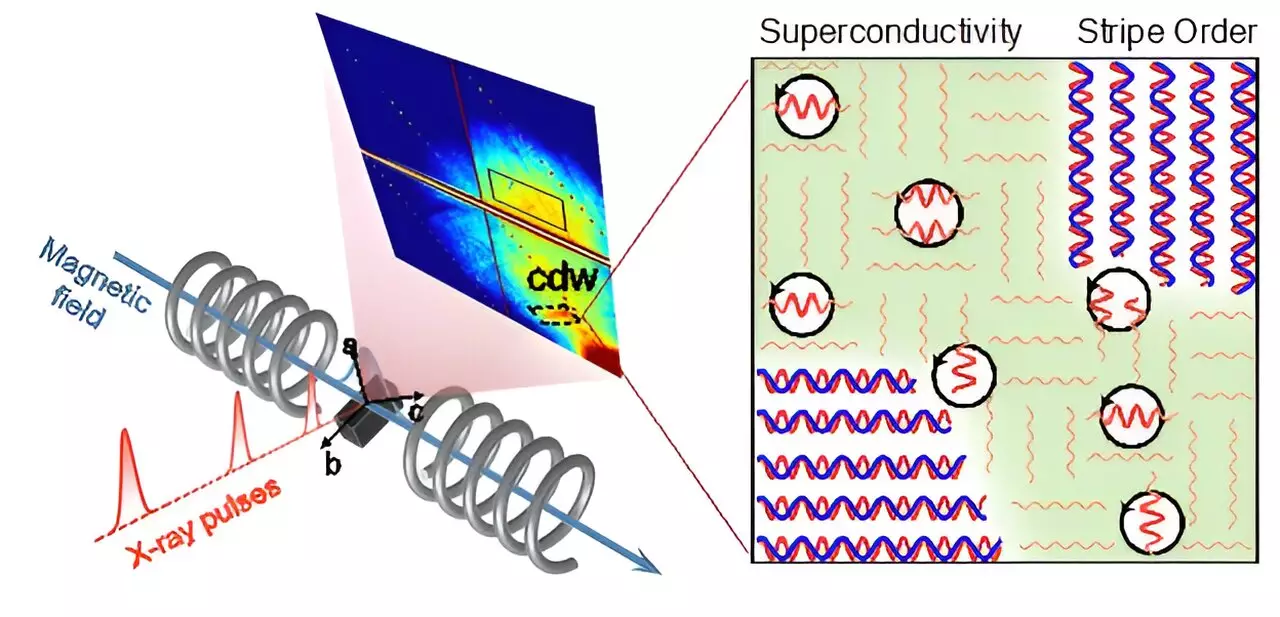In the realm of high-temperature superconductors, cuprates present a fascinating paradox where superconductivity battles against the dual forces of magnetic spin and charge density wave (CDW) order. Each electron in these materials possesses intrinsic properties such as spin and charge, which typically harmonize in regular metals, resulting in uniform conductivity. However, the complex electron interactions within cuprates lead to unconventional states emerging in these exotic materials.
The Discoveries in Stripe States
Recent advancements in research, particularly published in reputable journals like Nature Communications, have shed new light on what happens when strong magnetic interactions force electron spins to arrange themselves in a distinctive striped fashion. Here, spin density waves (SDW) and CDWs synchronize, generating a stable stripe state. This unexpected coalition between SDW and CDW not only highlights their organizational alignment but also raises questions about their simultaneous existence alongside superconductivity—an observation previously deemed impossible in scientific circles.
Short-Range Charge Density Waves: The Unlikely Allies
A pivotal aspect of the new research uncovers an astonishing revelation: short-range CDW can coexist with superconductivity, contrary to what traditional scientific understanding suggested. Rather than merely suppressing superconductivity, these short-range charge orders may actually bolster it in certain contexts. This unexpected synergy could pave the way for innovative strategies to enhance superconductivity at elevated temperatures and in stronger magnetic fields.
The prior perception that CDWs operate solely as adversaries to the superconductive state has now evolved. Researchers found that short-range interactions can enhance the functionality of superconductivity, creating avenues for designing materials with superior superconducting properties.
Exploring the Vortex Dynamics
The implications of this research extend further, particularly concerning the motion of vortices within the superconducting phase. The behavior of these vortices helps elucidate how charge order might empower the formation and flux dynamics in superconductors, introducing a new layer of complexity to the material’s phase alterations under diverse magnetic fields.
Moreover, the experiments conducted on cuprate La1.885Sr0.115CuO4 revealed that at specific high magnetic fields (between 12 to 24 Tesla), a transition occurs from a static vortex state to a more dynamic vortex liquid state. This fluid-like behavior challenges our understanding of superconductivity’s limits and acknowledges the interdependence of charge orders and superconductivity under extreme conditions.
Pushing the Boundaries of Superconductivity
As researchers delve deeper into these phenomena, it becomes increasingly evident that we are on the brink of a revolution in our understanding of high-temperature superconductors. The ability to manipulate short-range charge order could lead to substantial advancements in the design and application of superconducting materials. The intriguing finding that CDW intensity spikes align with vortex melting fields, which are significantly lower than those previously thought to halt superconductivity, signals a transformative shift in the paradigm of superconductivity research.
The intersections of quantum phenomena in cuprate superconductors foster an exciting frontier for both theoretical and practical applications. As investigations continue, we might witness the unraveling of a comprehensive quantum theory that elucidates the intricate dance of density waves and superconductivity, pushing the boundaries of technology toward realms previously considered unattainable.

